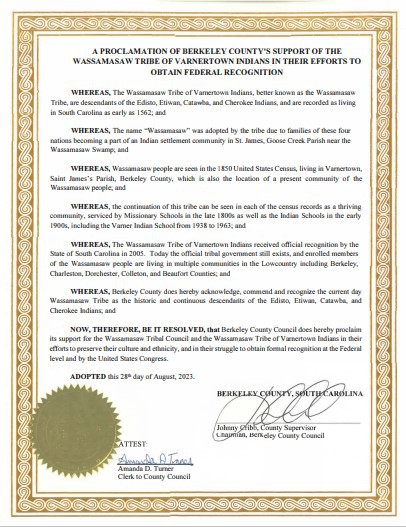
The Termination Era: When America Tried to Disappear Its Indigenous Nations
In the mid-20th century, as America grappled with the complexities of the Cold War and a burgeoning civil rights movement, a quieter, yet profoundly disruptive, policy was unleashed upon its Indigenous peoples. Driven by a misguided vision of "equality" and a desire to reduce federal responsibility, the United States government embarked on a program known as "Termination," a policy aimed at dismantling tribal governments, dissolving their unique legal status, and assimilating Native Americans into mainstream society. This ambitious federal attempt to end tribal recognition, primarily active throughout the 1950s, represented one of the most aggressive assaults on Indigenous sovereignty in modern American history, leaving a legacy of poverty, cultural erosion, and profound distrust that resonates to this day.
A New Direction for the "Indian Problem"
The roots of the Termination policy can be traced to a confluence of factors in post-World War II America. The war itself had exposed many Native Americans to the broader society, as thousands served in the armed forces or moved to urban centers for wartime industries. This experience, coupled with the prevailing "melting pot" ideology and a desire to "modernize" the nation, fueled a belief among some policymakers that the time had come to "free" Native Americans from federal "wardship."
For decades, federal Indian policy had oscillated between forced assimilation (like the Dawes Act of 1887) and a brief period of greater tribal self-governance under the Indian Reorganization Act (IRA) of 1934. However, by the late 1940s, a new conservative mood in Congress, coupled with lingering anti-IRA sentiment, began to push for a radical shift. Proponents of Termination argued that federal oversight was discriminatory, keeping Native Americans in a perpetual state of dependency, and that ending the special relationship would grant them full citizenship and economic freedom. This perspective, however, largely ignored the unique historical context and treaty obligations that underpinned tribal sovereignty.
The Legislative Hammer: HCR 108 and Public Law 280

The philosophical cornerstone of Termination was House Concurrent Resolution 108 (HCR 108), passed by Congress in August 1953. While not a law, HCR 108 declared it to be "the sense of Congress that, at the earliest possible time, all of the Indian tribes and individual members thereof located within the States of California, Florida, New York, and Texas, and all of the following named tribes and bands of Indians, should be freed from Federal supervision and control." It explicitly stated the government’s intent to terminate the federal relationship with numerous tribes, ending their status as distinct political entities.
This resolution was quickly followed by more concrete legislation, most notably Public Law 280 (PL 280), also enacted in 1953. PL 280 mandated a transfer of civil and criminal jurisdiction from the federal government to state governments in five states—California, Minnesota (excluding the Red Lake Reservation), Nebraska, Oregon (excluding the Warm Springs Reservation), and Wisconsin. It also allowed other states to unilaterally assume such jurisdiction. This shift meant that tribal courts and law enforcement, where they existed, were often superseded by state systems, further eroding tribal self-governance and complicating legal matters for Native communities accustomed to their own judicial processes.
"The policy of termination," observed renowned Indigenous scholar Vine Deloria Jr., "was simply a policy designed to wipe out the tribal existence of Indians. It was an attempt to remove the Indian from the land and from his culture, and it was a direct attack on tribal sovereignty."
Over the next decade, Congress passed specific termination acts for over 100 tribes and bands, affecting more than 13,000 Native Americans and stripping them of over 1.3 million acres of trust land. These acts typically severed federal services, ended federal recognition of tribal governments, and often resulted in the liquidation of tribal assets, particularly land, which was then sold off to non-Native buyers.
The Promise Versus the Reality: Devastating Consequences
The federal government’s stated goals for Termination were integration and economic self-sufficiency. The reality, however, was catastrophic.
For many terminated tribes, the loss of federal recognition meant the immediate cessation of essential services like healthcare, education, and infrastructure support, which had historically been provided or funded by the Bureau of Indian Affairs (BIA) in exchange for vast tracts of ancestral lands. State and local governments, often unprepared or unwilling to assume these responsibilities, frequently lacked the resources or understanding to effectively serve these newly "integrated" populations.
The economic consequences were particularly devastating. Tribes often lost control over their natural resources, which had been the foundation of their economies. The Klamath Tribe of Oregon, for example, whose vast timber reserves made them one of the wealthiest tribes in the nation, were terminated in 1954. Their trust lands, including valuable forests, were sold off, and the proceeds were distributed among tribal members. While seemingly an injection of wealth, this money often quickly dissipated, leaving individuals without land, without a tribal safety net, and without a sustainable economic base. Poverty rates soared, and the once self-sufficient Klamath people faced immense hardship.
Similarly, the Menominee Tribe of Wisconsin, another economically successful tribe known for its sustainable forestry practices, was terminated in 1961. The Menominee reservation was converted into a county, and their profitable tribal enterprise became a private corporation, Menominee Enterprises, Inc. (MEI). Lacking experience in the corporate world and burdened by new state taxes and regulations, MEI struggled, leading to the rapid depletion of tribal assets, the sale of ancestral lands to non-Natives, and a dramatic decline in the tribe’s economic and social well-being. As Ada Deer, a Menominee leader who would later become Assistant Secretary for Indian Affairs, powerfully recounted, "We went from a model tribe to the poorest county in the state."

Beyond the economic fallout, Termination inflicted immense social and cultural damage. The loss of tribal government dissolved traditional social structures and governance systems, leading to a breakdown of community cohesion. The federal Relocation Program, often implemented alongside Termination, encouraged Native Americans to move from reservations to urban areas, promising jobs and opportunities. While some found success, many encountered racial discrimination, lacked the necessary support networks, and struggled to adapt to an unfamiliar urban environment, often losing their cultural connections in the process. This policy contributed to the growth of urban Indian populations and created a new set of challenges related to identity and belonging.
Resistance and Reversal: The Road to Self-Determination
Despite the federal government’s aggressive stance, Termination was met with strong resistance from Native communities. Tribes fought back through legal challenges, political organizing, and tireless advocacy. Leaders like Ada Deer of the Menominee, along with a growing number of Native activists and their non-Native allies, formed organizations like the National Congress of American Indians (NCAI) and the Menominee Common Stock and Voting Trust (DRUMS – Determination of Rights and Unity for Menominee Shareholders) to challenge the policy and its devastating effects.
The failures of Termination became increasingly apparent by the late 1960s. The promised economic prosperity never materialized, social problems escalated, and the policy proved to be incredibly costly to administer, often shifting financial burdens from federal to unprepared state governments. Public opinion began to turn as the civil rights movement highlighted issues of minority rights and self-determination.
A pivotal moment came in 1970 when President Richard Nixon delivered a special message to Congress, unequivocally rejecting Termination. He declared, "The first Americans—the Indians—are the most deprived and most isolated minority group in our nation." Nixon affirmed that "self-determination among the Indian people can and must be encouraged without threat of eventual termination." This speech marked a profound shift in federal Indian policy, ushering in the "Self-Determination Era" that continues today.
In 1973, after years of relentless advocacy, the Menominee Restoration Act was signed into law, officially restoring federal recognition to the Menominee Tribe—a groundbreaking victory that demonstrated the possibility of reversing the damage of Termination. Other terminated tribes, including the Klamath, later also regained federal recognition, though the process was often complex and could not fully undo the economic and social losses.
A Lasting Legacy of Resilience
The Termination era stands as a stark reminder of the dangers of assimilationist policies and the profound importance of tribal sovereignty. While the policy officially ended, its legacy endures. Many tribes continue to grapple with the long-term effects of lost land, fractured communities, and economic hardship. The period cemented a deep-seated distrust of federal policies within many Native communities, a distrust that has had to be painstakingly rebuilt over decades.
Yet, the story of Termination is also a testament to the remarkable resilience and enduring spirit of Indigenous peoples. Despite immense pressure, they resisted the government’s attempts to erase their identities, fought for their rights, and ultimately paved the way for a new era of self-determination. The lessons learned from this dark chapter continue to inform federal-tribal relations, emphasizing the critical importance of government-to-government respect, the protection of treaty rights, and the unwavering commitment to supporting tribal self-governance for the vitality and future of Native nations. The 1950s attempt to disappear America’s Indigenous peoples failed, largely due to the unwavering strength of those it sought to extinguish.